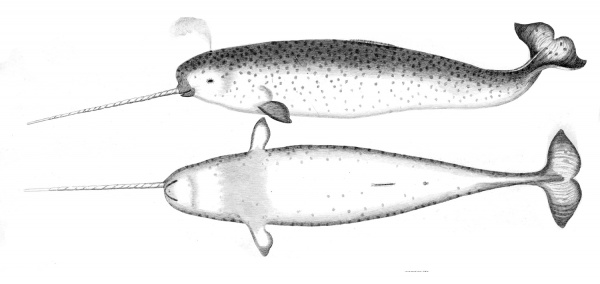Facts About Narwhal
The narwhal, sometimes referred to as the narwhale, is a captivating medium-sized whale that inhabits the frigid Arctic waters surrounding Greenland, Canada, and Russia. They are easily recognizable by their long, spiral tusk, which is essentially an elongated canine tooth protruding from their upper left jaw. Narwhals are members of the Monodontidae family, a group they share with beluga whales. Unlike many other whale species, narwhals lack a dorsal fin. They communicate through an array of clicks, whistles, and knocks.
These distinctive creatures have a seasonal diet. During the winter months, they dive deep beneath thick ice to hunt for flatfish and other bottom-dwelling species. In the summer, their diet shifts as they consume Arctic cod and Greenland halibut. Narwhals are remarkable divers; males can reach depths of up to 1,500 meters. They can live for up to 50 years but face several threats, including entrapment under sea ice, predation by orcas, and hunting by indigenous communities for their meat and ivory.
The narwhal's tusk is its most defining feature. Typically, males possess this elongated, spiral tusk, which serves various purposes, such as communication and possibly stunning prey. Females can also develop tusks, although theirs are generally smaller and less prominent. Scientists have long been intrigued by the narwhal's tusk, with some theories suggesting it may function as a sensory organ.
Narwhals are social animals that often migrate in groups, changing locations with the seasons. They have a distinctive diet and are noted for their intensive feeding habits in the summer and deep diving activities in the winter. Their communication involves a combination of vocalizations, including clicks, whistles, and knocks.
Conservationists are increasingly concerned about narwhals due to the impacts of climate change, hunting, and habitat disruption. Population estimates vary, but the species is currently listed as "near threatened" by the IUCN. Historically, narwhals have been hunted for their tusks, meat, and blubber. They have also featured prominently in cultural legends and literature, with mentions in classic works by authors such as Jules Verne and Herman Melville.

 United States
United States